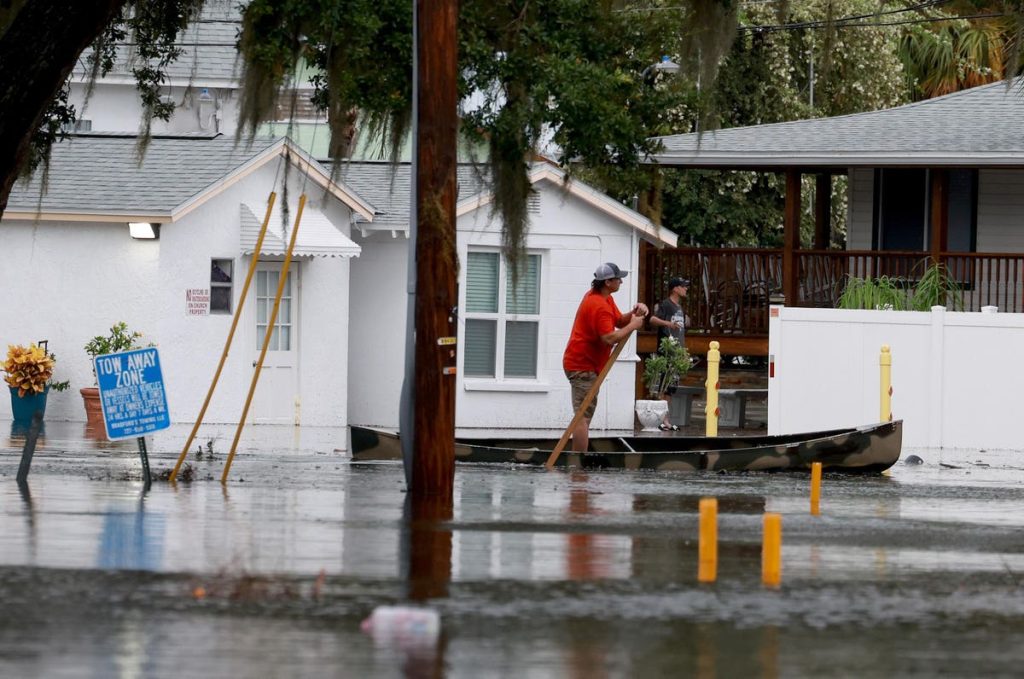Topline
Tropical Storm Lee is expected to rapidly intensify into a major hurricane this week as it churns across the Atlantic, but its name and the names of all other Atlantic tropical storms and hurricanes were predetermined six years ago, and in many cases have been used before.
Key Facts
Every year, rotating lists of 21 names in alphabetical order (excluding Q, U, X, Y and Z) are used for hurricanes in the Atlantic basin (the north Atlantic, Gulf of Mexico and Caribbean Sea) are created by the World Meteorological Organization (WMO) that are rotated out every six years.
Hurricanes formed in the eastern Pacific also follow the same six year rotation, but they do use names that start with X, Y, and Z, though the same two male and female names are used each year for those letters.
The 2023 Atlantic hurricane season began June 1, with the first in the list of named storms being Arlene and the last being Whitney—names that are set to be reused in 2029.
The names, which alternate between female and male, are of either English, Spanish or French descent in order to cater to the geographical location the seas are in, and when names run out, the WMO uses names from a supplemental list.
If a hurricane is particularly deadly or costly, the WMO will retire its name and replace it with another; some retired hurricane names in recent years include Katrina, Ike, Irene, Sandy, Harvey, Michael, Laura and Ian.
News Peg
Tropical Storm Lee formed in the Atlantic Ocean on Tuesday, and experts predict it will turn into a major hurricane. The storm’s ultimate fate remains unclear, but most long-range models are in agreement it will curve away from the U.S. East Coast. It’s also expected to stay north of the Leeward Islands.
Big Number
94. That’s how many Atlantic hurricane names have been retired, according to the National Hurricane Center (NHC). Of those 94 names, 12 begin with the letter I. Daniel Brown, senior hurricane specialist for the NHC, told CBS News the reason for this is probably because “by the time we get to the I name, we’re into the peak hurricane season,” and storms during this time can be especially devastating.
Key Background
Tropical storms were tracked by the year and order they happened in that year up until the 1950s, according to the National Oceanic and Atmospheric Administration. However, after tropical storms were consistently called by the wrong name, the U.S. began using only female names in 1953 before adding male names in 1979. The Atlantic Ocean names for 2023 are Arlene, Bret, Cindy, Don, Emily, Franklin, Gert, Harold, Idalia, Jose, Katia, Lee, Margot, Nigel, Ophelia, Philippe, Rina, Sean, Tammy, Vince and Whitney. A cyclone doesn’t get a name until its maximum sustained winds reach at least 39 miles per hour, making it a tropical storm. The tropical storms keep their names if they progress into hurricanes by sustaining winds of at least 74 miles per hour. Hurricane Idalia made landfall in Florida on August 30 and Tropical Storm Lee is actively brewing in the Atlantic. Though it may seem like the letters J and K were skipped, Tropical Storms Jose and Katia had brief stints as named storms before fizzling out.
Tangent
Though there is a supplemental list of 21 names once the list of names runs out, this has only occurred twice in the last 15 years, with 2020 being the most recent. Up until 2021, the supplemental name list used to be the Greek alphabet, but the WMO stopped using it because it was too “confusing.”
Tropical Storm Lee Forms, Expected To Rapidly Become Major Hurricane (Forbes)
Idalia Expected To Make Landfall In Florida As Category 2 Hurricane (Forbes)
A Nasty I Of The Storm: Ida Is 12th I Hurricane Name Retired (CBS News)
Tropical Storm Jose forms in the Atlantic Ocean (CBS News)
Tropical Storm Katia forms in Atlantic; NHC tracks another area of disturbance (News Channel 8)
Read the full article here










